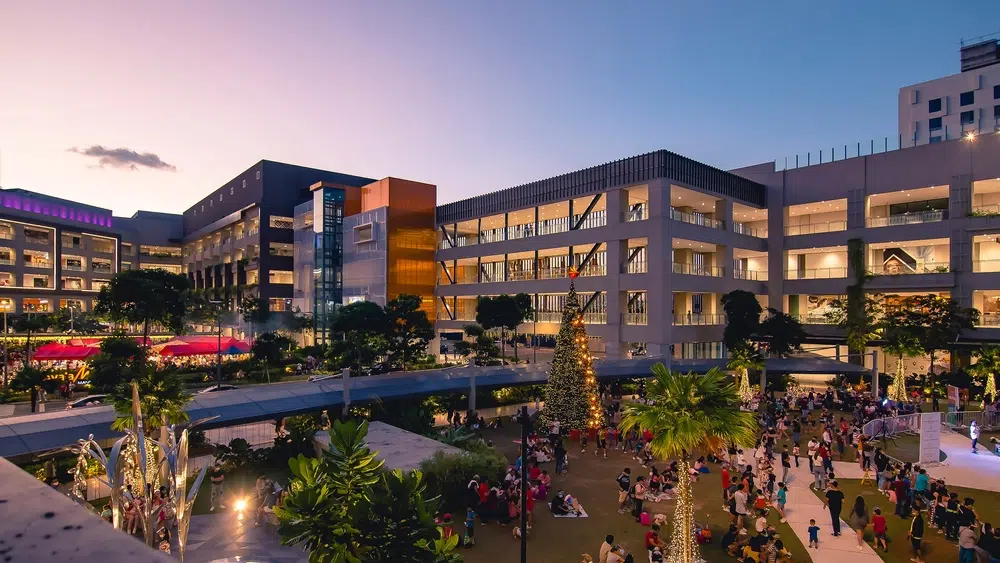
How etaily Helped Launch Ayala Mall’s ZingMall platform
- etaily Team
- September 28, 2022
- 13 minutes reading
Ayala is looking to establish a strong presence in the eCommerce space through ZingMall.
Due to the COVID-19 pandemic, the retail industry has faced significant changes over the past few years.
Since the government restricted face-to-face operations, many businesses were forced to shut their doors. Those who persevered were limited to visual merchandising, online shopping platforms, and other digital alternatives to keep customers from engaging with their brand.
Even Ayala Malls, one of the country’s retail giants, have been immensely affected by this shift. But now that the world is slowly moving towards a reopened economy, Ayala is looking to establish a strong presence in the eCommerce space through ZingMall. With their partnership with etaily, an eCommerce enabler in the Philippines, this project came to fruition.
Identifying the Problem: What do we want to solve for Ayala Malls?
With the continuous rise of eCommerce trends today, traditional retailers are increasingly interested in shifting to the digital landscape. Keeping this in mind, we expect the next frontier in this industry will lean more towards finding ways to meet the demand for instant gratification.
As Filipinos move forward and embrace the new normal, we want to find ways to bridge the gap between in-store and online shopping in the Philippines. Doing so will help improve our standard operations and provide new ways for our customers to enhance their buying experience.
Setting Objectives and Goals: What were the targets set to be able to solve this problem?
While online apps and platforms are nothing new to the market, developing and managing one requires great effort. As such, we have established the following objectives and goals for this project:
1. To work with Ayala Malls in building the leading website and mobile app for on-demand eCommerce in the Philippines
Ayala ZingMall will be dedicated to meeting the needs of local consumers in the Philippines. It will also serve as a way to enhance a customer’s shopping experience.
2. To cement the Ayala Malls’ dominance in Philippine retail, both offline and online
Ayala Malls are known for being some of the top offline retailers in the country. Through ZingMall, the brand will also aim to expand its online shopping dominance.
3. To facilitate the digital transformation of Ayala Malls and aid its journey to become a pioneer in omnichannel retail
ZingMall will be one of the many tools utilized by Ayala to enhance its omnichannel strategies further. They can use the development of this platform to drive better revenue and build brand awareness.
4. To achieve the customer’s instant gratification by fulfilling orders in less than two hours
Common marketplaces typically fulfill orders within two to three days. ZingMall aims to carry out orders within two hours or less to grant instant gratification to customers.
5. To create a seamless user experience to mirror in-store shopping in an online setting
As more consumers grow to prefer online shopping, it is imperative to enable user-friendly platforms. Yet, for those unfamiliar with online formats, ZingMall will act as a bridge that can mimic in-store shopping from start to finish.
6. To address the pain points of existing instant commerce platforms
Apart from the usual two to three days waiting period, shopping online can also result in varying shipping fees when ordering items from multiple stores.
It may take numerous riders to make each delivery, regardless of where customers bought the product. These are some of the few pain points ZingMall wishes to tackle for a more seamless customer buying experience.
Applying Solutions: What were the steps taken to reach our goals? What were the strategies used? What was the process like?
1. Project scoping
- Identifying all use cases of the platform
During the early stages of the project, Ayala established multiple high-level requirements that the platform needed to meet. These factors are as follows:
- The front-end must be accessible through both web and mobile
User accessibility remains a priority for the ZingMall platform. As such, shoppers must have smooth access to it on both website and mobile platforms.
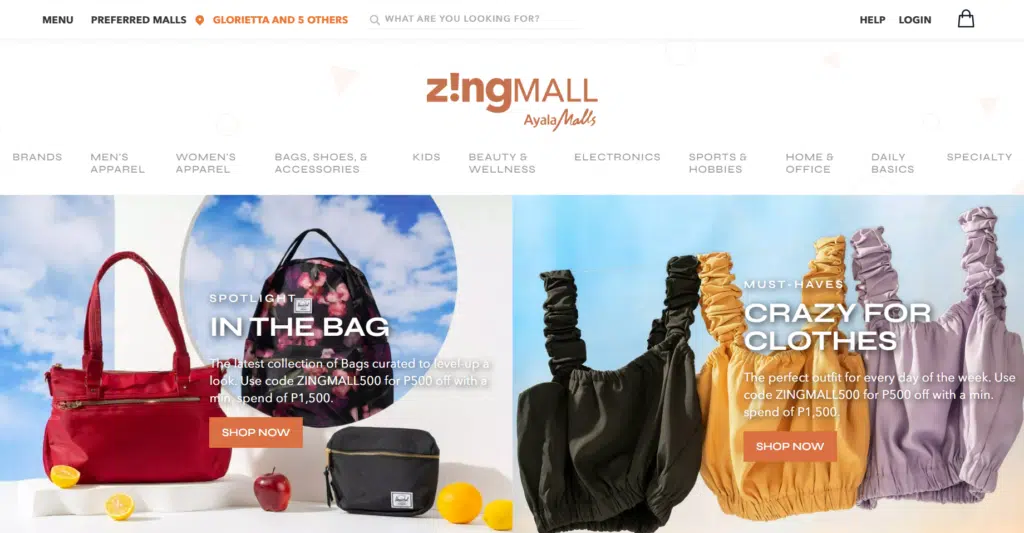
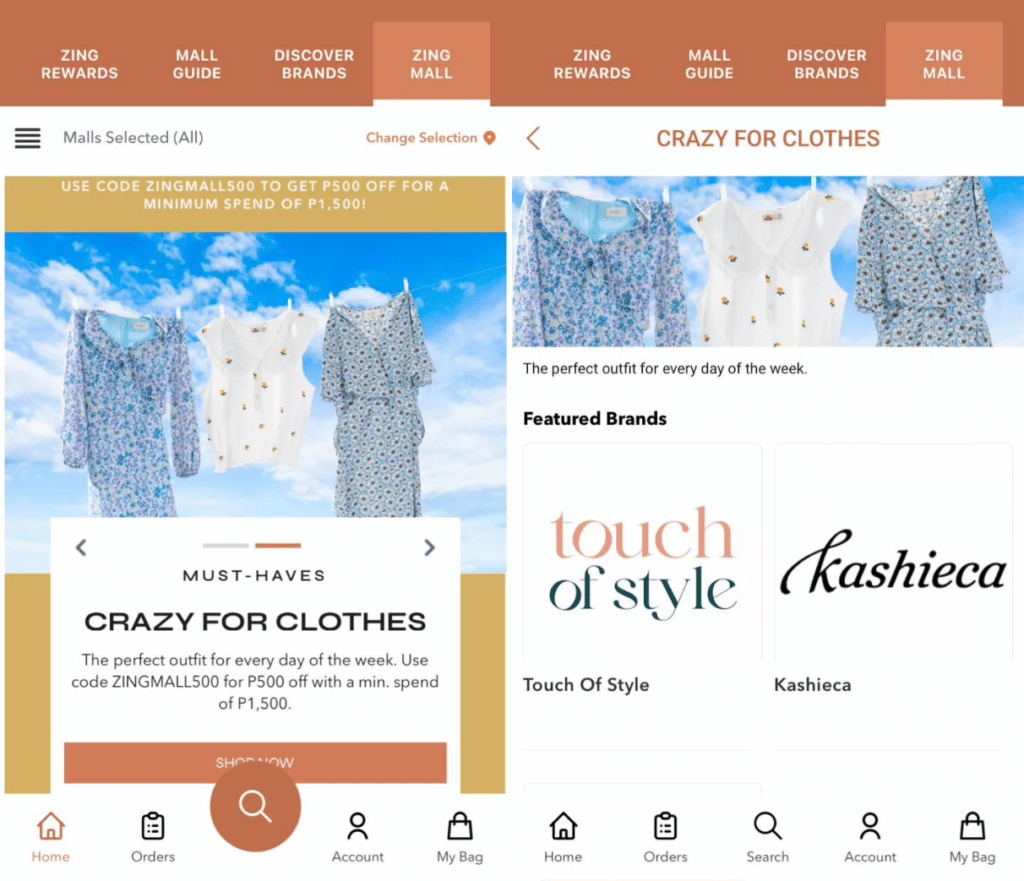
- The back-end must be accessed via laptop and tablets
Merchants should have easy access to the ZingMall through various devices. It will enable a more convenient way to use inventory management and other essential features in the platform.
- Both the front-end and back-end must be integrated
Any changes made by merchants related to the product must apply to the front end. Subsequently, orders from shoppers must flow seamlessly to the back-end for order processing.
- There must be a content management system
The ideal content management system should allow the Ayala team to make significant changes to the platform. Some examples include:
- The photos used in each banner of the home page
- The layout of all banners
- The merchants featured on the home page
- The external links (e.g., footers)
- The notification templates (email and SMS)
- The platform must mirror offline shopping in an online setting
Users are encouraged to select a mall they want to shop in and search through the available products listed to imitate offline shopping. Through this, the customer can now window shop for items they might want to purchase.
- Payment disbursements to merchants and stakeholders must be automated
The selected payment gateway must automatically send the appropriate amounts under a specified function. It allows the platform to distribute the proper sum to the merchant, third-party logistics (3PL), Ayala, and etaily, the eCommerce enabler.
- The platform must have multiple 3PLs
Given the timeframe for processing orders, there must be multiple integrations with 3PLs to ensure that deliveries can be booked within a short period. In this case, there must be a minimum of three 3PL providers.
- Other key features determined during project scoping:
- Single Sign-On (SSO) – Users already signed in on Zing, Ayala’s app, should not need to log in again when checking out items via ZingMall.
- In-platform customer support – Customers should conveniently access a customer support agent within the application.
- Location-based inventory – Merchants must tag their stock to a specific location or branch. This feature will allow customers to find products nearby more easily.
- Multiple and specific user roles – Tasks are segmented according to brand admin, branch admin, and clerk positions. Merchants must have one of three available user roles assigned.
- Voucher and promotion management – Merchants should be given access to create their own vouchers and markdowns. Users may use this to claim promotional prices and discounts on the shopper’s portal.
- Reporting and dashboards -Merchants should have readily available dashboards that present their current metrics. They can view branch and brand performance here.
- Cross-mall ordering – Users should access other malls and shop for products they need. It allows them to expand their search beyond their local areas.
- Other key features determined during project scoping:
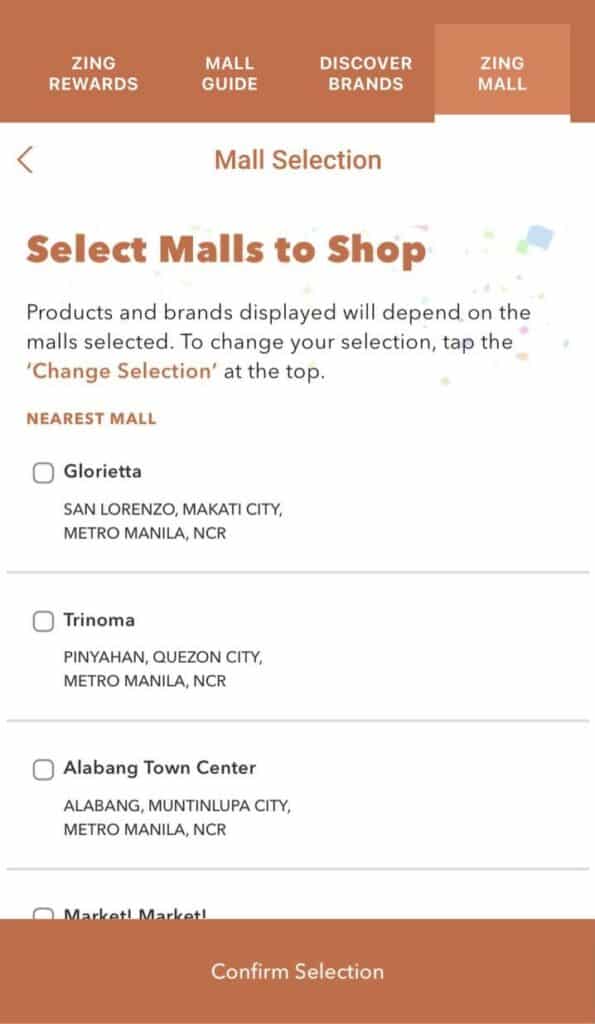
- Cross-merchant ordering – Users should have access to multiple merchants under one mall. The items must be consolidated and delivered by a single rider to minimize delivery fees.
- Listing down all user stories that needed to be developed
In its development stages, etaily and Ayala discussed each possible user story for the minimum viable product. The team set the user’s intention to flow in every application section. Factors in this step included browsing, adding items to their cart, and checking out.
Each user story listed also required acceptance criteria, which acted as the basis for the development team for each feature. Below is an example:
| User Story | Acceptance Criteria |
| As a Buyer, I want to indicate how many particular item variants I want to add to the cart. | Given that I am a Buyer When I am on the product page And I click on the +/- toggle for quantity Or input a number on the quantity field in between the toggle The page should update the quantity |
- Preparing documents to support merchant operations
To better support the features of ZingMall, the development team created standard operating procedures (SOPs) and other documents. The ground team would utilize this to support the following mechanical operations:
- Creating flow charts and drafting SOPs for each
The platform will outline single merchant orders, cross-merchant, cross-mall, orders for delivery, and other types of transactions. It will help support on-ground team operations and allow order processing to go smoothly.
The SOPs will also cover how to handle negative scenarios like being unable to book a rider for delivery and having a customer order an out-of-stock item in the store.
- Developing merchant rules and regulations
Merchants must adhere to the rules when they opt into the ZingMall platform. These specify the minimum preparation and ship-out time along with other shop requirements.
- Devising customer support knowledge base
This base is a consolidated list of 26 frequently asked questions (FAQs) that may arise from the customer’s side. Merchants will use the establishment of this document to help lessen the number of tickets submitted to customer service.
2. Platform development
- Developing code based on user stories identified
The development team used the Scrum methodology to conceptualize and implement each feature in the ZingMall. This process required creating wireframes that would map out how the user interface and experience would be. Once established, this would be used as a guide to writing the code up to certain specifications.
- Paynamics
Paynamics was a payment method the platform provided to aid in automated disbursements. It included options such as credit cards, debit cards, e-wallets, and cash-on-delivery.
- 3PLs
A comparative analysis found that out of eight same-day delivery 3PLs identified. Three were to be prioritized: Lalamove, Grab, and Borzo. These factors were based on their supply of riders, competitive shipping fees, and reliability.
- Zing
Zing app integration was necessary to address the SSO requirement. It was also one of the many factors worked on by the development team.
- User acceptance testing (UAT)
Once the developed code has undergone quality assessment and quality check, the team has moved to the UAT process. Each feature is tested under multiple scenarios to see how it will react to positive and negative actions.
A total of 378 UAT cases were established over two weeks, including the time needed to remedy issues that did not pass the process.
- Vulnerability assessment and penetration testing (VAPT)
VAPT focuses on the platform’s security as a whole. In this stage, the team partnered with RedRock.io to mimic the movements of cybercriminals in a live environment. Weak points were identified through this process, tagged as severe, high, medium, low, and informational risks.
Throughout this phase, the team did not identify any severe, high, or medium risks before launching the platform. It took around three weeks to complete, which includes the remediation time.
- Live testing
After passing the VAPT, the platform underwent live testing to simulate real-life scenarios. Test cases account for single merchant orders, cross-merchant orders, and cross-mall orders with varying fulfillment methods. It is done in a live environment where the public site is accessible to all.
- Go/No-go testing
This stage was a meeting with the Ayala team, where we discussed issues during the live testing. Major conflicts involved payments not pushing through, inability to book riders, and order status not updating as they should.
3. Operations preparation
- Hiring of ZingMall operations manager
Parallel to the platform development, preparations for the on-ground mall operations were also being made to support merchants and fulfill the two-hour order processing promise.
The operations manager monitors the fulfillment times and handles backlogs and 3PL concerns. They would also be assigned to address merchant concerns and manage mall runners.
- Hiring of ZingMall runners
Mall runners will pick up items in an order, which can come from multiple merchants in one mall. The products will be consolidated and handed over to one rider to prevent multiple deliveries and fees.
- Constructing consolidation areas in participating malls
Each mall with an on-ground team will establish a ZingMall kiosk or consolidation area. It will be set as a point where orders are picked up. The operations manager will also be stationed here, so they are easily reachable and can provide support anytime.
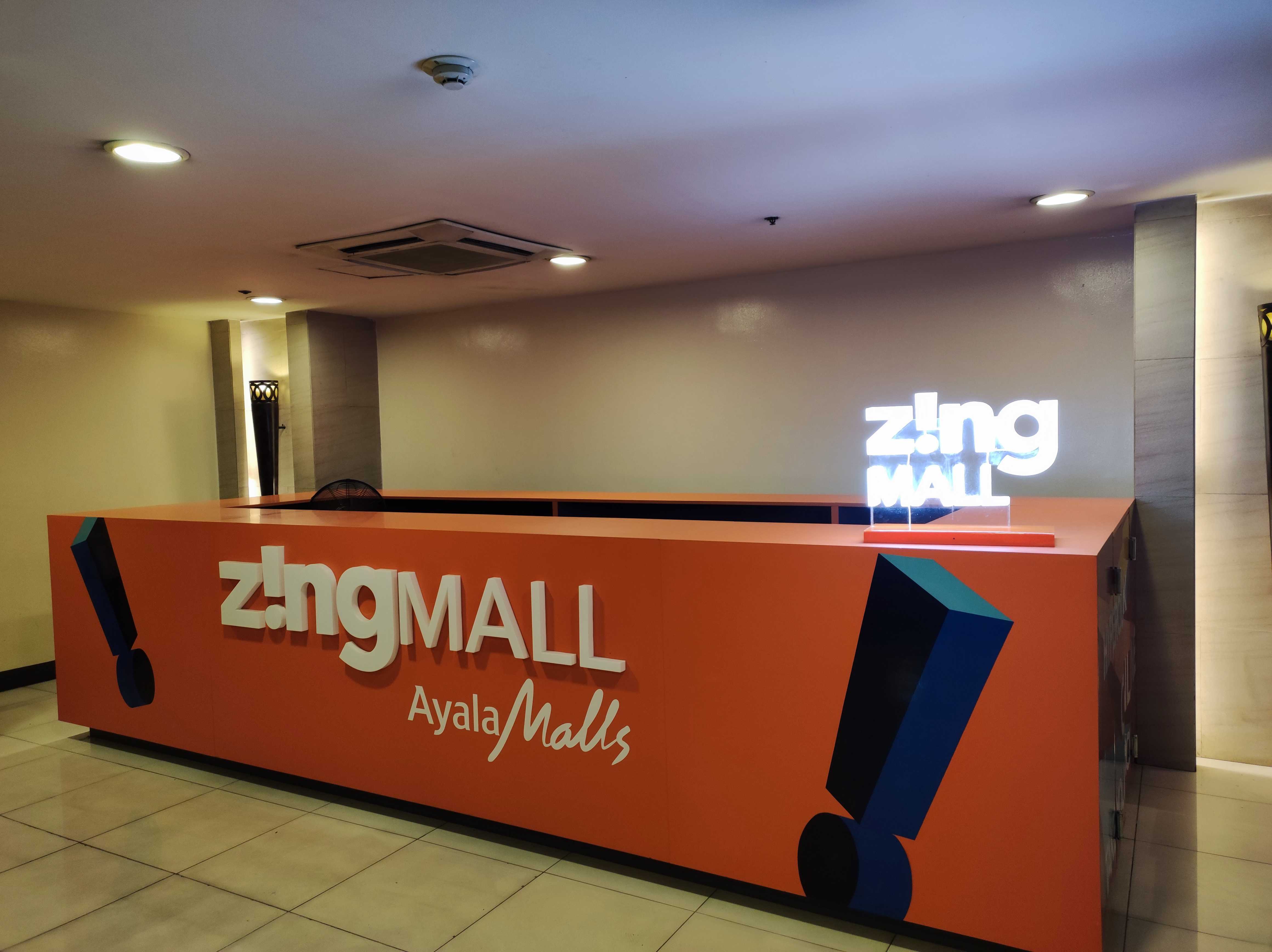
- Training of merchants
An extensive onboarding process was done to ensure that all participating merchants were prepared, which was split into the following parts:
- ZingMall orientation
The merchant head office undergoes an online orientation where various points are discussed. Merchants must upload a master list of all stock-keeping units (SKUs) in bulk to establish their ZingMall store.
Other details such as product images, banners, and user information were also required. It is to help establish their online stores properly and network them to a designated e-wallet where disbursements will be made.
- ZingMall store setup
The setup process covers how a merchant can upload various information and data to their store. It includes the user creation process, product upload, and order fulfillment roles.
- In-store operations
A physical demo shows how merchant staff should manage their ZingMall operations. A run-through shows workers how they can update inventory and fulfill orders.
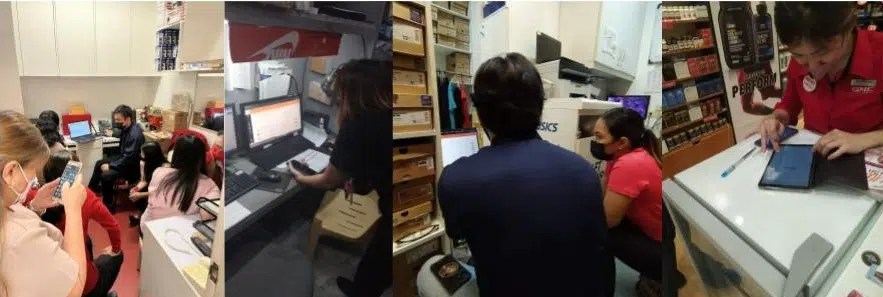
Currently, the team is averaging an onboarding rating of 9.8/10, which can be highly attributed to the sessions’ extensive training decks, videos, and direct group chats that help address any concerns about becoming a part of the ZingMall.
Reviewing the Results: What result did we achieve at the end of the project?
The project has been live for five months, with an average delivery time of 40 minutes. So far, the platform is getting an average monthly page view of 150,000.
Currently, there are 173 branches on ZingMall across 6 malls. On the platform, there are 72 live merchants, 7,581 total products, and 214 product categories available. Delivery services cover NCR, Region III (Pampanga), Region IV-A (Cavite, Rizal, Laguna), and Region 7 (Cebu).
etaily Team
etaily is an e-commerce enabler committed to helping emerging and established brands build their online store and presence. We provide end-to-end e-commerce solutions—from content creation to warehousing and fulfillment—to enable brands to meet their goals, whether that’s attracting customers, enabling online transactions, or delivering products.